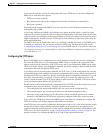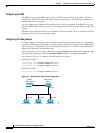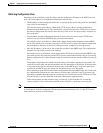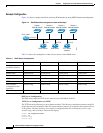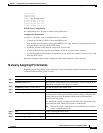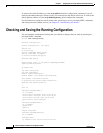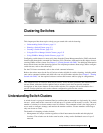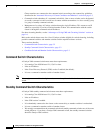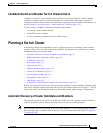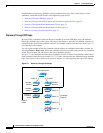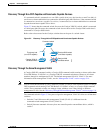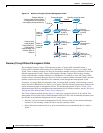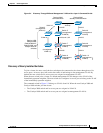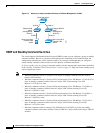
CHAPTER
5-1
Catalyst 2940 Switch Software Configuration Guide
78-15507-02
5
Clustering Switches
This chapter provides these topics to help you get started with switch clustering:
• Understanding Switch Clusters, page 5-1
• Planning a Switch Cluster, page 5-3
• Creating a Switch Cluster, page 5-15
• Using the CLI to Manage Switch Clusters, page 5-21
• Using SNMP to Manage Switch Clusters, page 5-22
Configuring switch clusters is more easily done from the Cluster Management Suite (CMS) web-based
interface than through the command-line interface (CLI). Therefore, information in this chapter focuses
on using CMS to create a cluster. See Chapter 3, “Getting Started with CMS,” for additional information
about switch clusters and the clustering options. For complete procedures about using CMS to configure
switch clusters, refer to the online help.
For the CLI cluster commands, refer to the switch command reference.
Refer to the release notes for the list of Catalyst switches eligible for switch clustering, including which
ones can be command switches and which ones can only be member switches. See Chapter 3, “Getting
Started with CMS,” for the required software versions and browser and Java plug-in configurations.
Note This chapter focuses on Catalyst 2940 switch clusters. It also includes guidelines and limitations for
clusters mixed with other cluster-capable Catalyst switches, but it does not provide complete
descriptions of the cluster features for these other switches. For complete cluster information for a
specific Catalyst platform, refer to the software configuration guide for that switch.
Understanding Switch Clusters
A switch cluster is a group of connected Catalyst switches that are managed as a single entity. In a switch
cluster, 1 switch must be the command switch and up to 15 switches can be member switches. The total
number of switches in a cluster cannot exceed 16 switches. The command switch is the single point of
access used to configure, manage, and monitor the member switches. Cluster members can belong to
only one cluster at a time.
The benefits of clustering switches include:
• Management of Catalyst switches regardless of their interconnection media and their physical
locations. The switches can be in the same location, or they can be distributed across a Layer 2
network.



